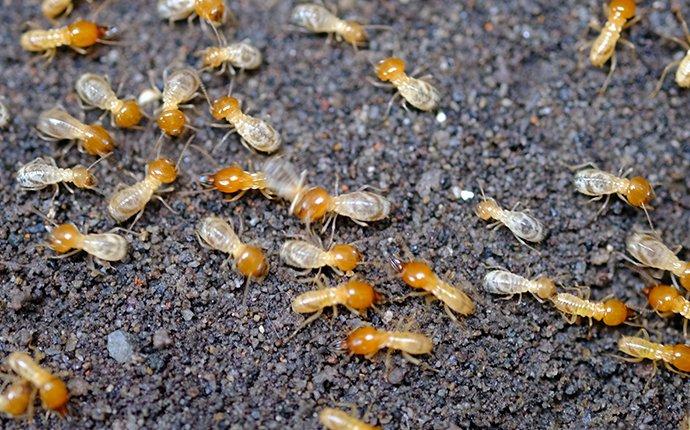Environmental Influence of Insect Control: Balancing Effectiveness With Sustainability
The environmental influence of bug control is a crucial concern that requires a delicate equilibrium in between attaining efficiency in managing pests and making sure sustainability of our communities. From the use of harmful chemicals that seep right into our dirt and water to the unintentional repercussions on non-target varieties, the effects of traditional insect control practices are far-reaching.
Harmful Chemicals in Bug Control
The utilization of harmful chemicals in parasite control postures significant environmental and health threats that call for cautious consideration and reduction strategies. Herbicides, pesticides, and pesticides are generally made use of to eradicate insects, however their prevalent application can result in unintentional repercussions. These chemicals can contaminate dirt, water resources, and the air, influencing not only the targeted parasites yet likewise valuable pests, wildlife, and humans.

To address these risks, incorporated pest monitoring (IPM) techniques are being advertised as a more sustainable option. IPM entails a combination of methods such as organic control, habitat control, and the targeted use pesticides as a last resource (ant control clemmons nc). By taking on a holistic method to pest control, we can decrease the environmental and wellness effects related to damaging chemicals while effectively handling pest populaces
Effect On Non-Target Species
Taking into consideration the unplanned effects of bug control techniques, the impact on non-target species is a crucial aspect that requires extensive evaluation. While insect control steps intend to target particular insects, other organisms in the environment may be inadvertently influenced. Non-target varieties, consisting of helpful insects, birds, creatures, and even plants, can endure indirect or straight damage from pesticide applications or organic control techniques.
Chemicals can have sub-lethal or deadly effects on non-target varieties. Insecticides designed to combat a specific bug parasite may hurt pollinators like or natural killers such as ladybugs. Additionally, chemical deposits can gather in the setting, affecting non-target microorganisms gradually. Biological control agents, if not species-specific, can present risks to unexpected targets, interrupting the ecological balance.
To minimize the effect on non-target types, incorporated pest management (IPM) approaches that stress a holistic strategy to pest control are suggested. These approaches prioritize the usage of eco-friendly methods, lessening injury to beneficial microorganisms while efficiently taking care of pest populations. Conducting thorough threat assessments and monitoring the outcomes of pest control initiatives are vital actions in securing non-target types and advertising overall community wellness.
Soil and Water Contamination
Unplanned environmental consequences of pest control techniques prolong beyond influencing non-target types, with significant effects for soil and water contamination - ant control services. Pesticides, herbicides, and chemical fertilizers utilized in pest control can leach right into the dirt and pollute groundwater, presenting a threat to both terrestrial and water ecosystems.
Water contamination is another vital concern associated with bug control practices. Runoff from farming areas treated with pesticides can carry these chemicals into neighboring water bodies, influencing water organisms and water quality. Impurities in water sources can have far-ranging repercussions, affecting not only aquatic life but additionally human health through the usage of infected water or marine organisms. To mitigate dirt and water contamination from pest control tasks, integrated insect monitoring methods that prioritize sustainability and lessen chemical inputs are essential.
Air Contamination From Pesticide Usage
Exposure to airborne chemicals throughout farming applications poses a considerable worry for air contamination control actions. When pesticides are sprayed onto crops, they can volatilize into the air and type volatile organic compounds (VOCs) and other airborne contaminants. These chemicals can contribute to the formation of ground-level ozone, a major element of smog that can have destructive results on human health, plant performance, and general air quality. Additionally, chemical drift, where pesticides are lugged by the wind to unplanned locations, can bring about the contamination of close-by communities and water bodies.

Techniques for Lasting Pest Control
In the world of farming techniques, applying sustainable parasite control strategies is extremely important for over here preserving eco-friendly equilibrium and securing plant yields. Lasting insect control highlights the use of eco friendly techniques to handle parasite populaces successfully while lessening injury to non-target organisms and ecological communities. Integrated Parasite Monitoring (IPM) is an extensively adopted method that integrates biological, social, physical, and chemical control methods to attain long-term insect management remedies.
Plant rotation and diversification are additionally reliable methods to disrupt pest life cycles and produce much less desirable problems for pests to grow. Ultimately, by integrating these lasting bug control methods, farmers can accomplish a balance in between pest monitoring effectiveness and environmental stewardship.
Conclusion
To conclude, the ecological effect of bug control approaches should be very carefully thought about to stabilize effectiveness with sustainability. Hazardous chemicals used in parasite control can lead to dirt and water contamination, air contamination, and damage non-target varieties - termite control services. It is critical to implement lasting insect control techniques to decrease these negative results on the setting and promote a much healthier ecological community for future generations
By taking on a holistic strategy to pest control, we can decrease the ecological and health influences associated with dangerous chemicals while successfully taking care of pest populaces.

To reduce the air contamination caused by chemical use, it is essential to adopt incorporated insect management techniques that prioritize the use of non-chemical pest control techniques, such as plant rotation, all-natural killers, and immune crop ranges. Sustainable parasite control emphasizes the use of ecologically pleasant approaches to take care of bug populations successfully while lessening harm to non-target microorganisms and environments. Integrated Pest Monitoring (IPM) is an extensively adopted technique that incorporates biological, social, physical, and chemical control methods to accomplish long-lasting insect monitoring solutions.